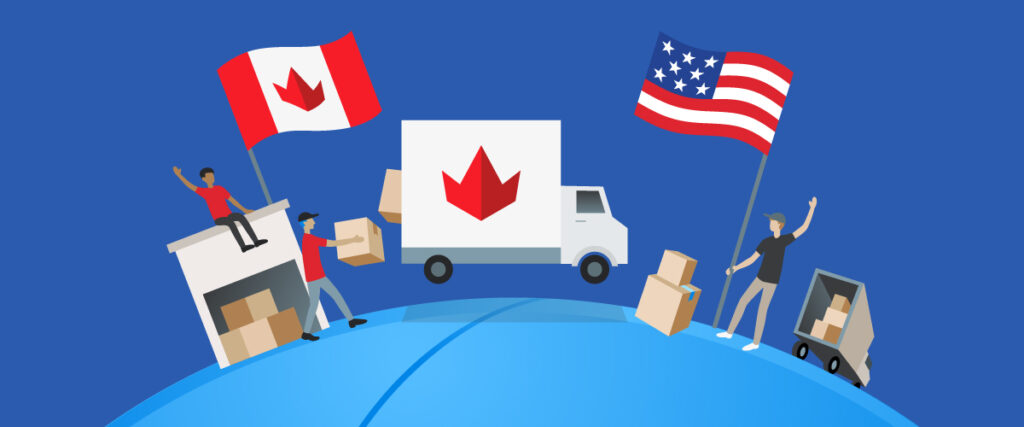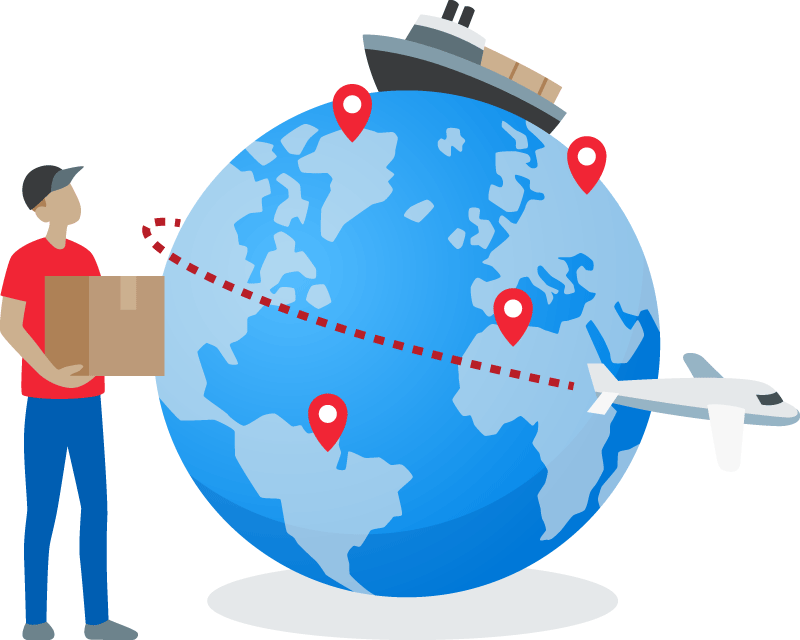Tariffs raise costs as the country of import adds customs and duty fees to goods. In order to compensate, businesses tend to pass on the higher costs to customers (consumers), who will ultimately pay more for the product. This in turn limits the availability of certain products by making it more expensive to bring them into the country.
With the United States threatening to impose tariffs on Canada and other countries, it’s important to understand the full implications and discover solutions, like Chit Chats, to combat the potential impact on future cross-border trade between the countries.
Understanding Tariffs
As mentioned, tariffs are taxes that governments apply to imported goods. Unlike income, sales or property taxes, tariffs specifically target imports or exports. These taxes can significantly increase the prices consumers pay for everything, from groceries to household appliances.
Who Pays Tariffs?
If your business imports goods from another country, you are usually liable for the tariffs on those products. You must then decide whether to pass on the added costs to your customers by increasing prices or absorb the costs to remain competitive, but also reducing your profit margins.
How Do Tariffs Work?
Depending on a government’s tactics, it can protect its domestic market by introducing or raising tariffs to decrease the amount of imported goods and increase their domestic market’s competitiveness. This practice can strain international relations and trade dynamics between two countries if one deems the set of tariffs to be unfair.
U.S. and Canada Tariffs
In light of U.S. President Donald Trump’s tariffs announcement, which promises 25% or higher on goods imported from Canada and Mexico, Canadian e-commerce sellers are investigating ways to reduce the burden of the proposed charges.

For example, the Chit Chats team is working on a Delivery Duties Paid postage solution for e-commerce businesses if the U.S. officially imposes tariffs on incoming shipments. This would allow your business to remain competitive within the U.S. market by absorbing the added costs of the tariffs. With shipping traditionally bringing convenience and challenges for customers, consumer expectation drives shipping logistics, and managing these expectations is vital.
Canada’s Response to Tariffs
Canada’s response to the announcement of U.S. tariffs was quick, designed to deter Trump’s intention to proceed with the hikes. On March 4, the Honourable Dominic LeBlanc, Canada’s minister of finance and intergovernmental affairs, announced the Canadian government’s intention to proceed with a 25% tariff hike on $155 billion of imported American goods — a $30 billion list of those immediately subject to the increased Canadian tariffs on U.S. goods. The government maintained the response was to protect the Canadian economy and jobs.
How the U.S. Tariffs Hikes Will Affect Canadian e-Commerce
Small online businesses in Canada could feel the brunt of tariff increases, as their sales channels are digital only. Unlike brick-and-mortar (physical) retailers, online sellers are ready to export their products at a moment’s notice. Though the internet has no set borders, many small Canadian e-commerce businesses heavily rely on the larger U.S. market for most of their revenue.
A 25% tariff will mean either a loss in profits or the need to increase selling prices. Either way, it would make exporting to the U.S. difficult for many Canadian small businesses as they try to navigate these changes. Chit Chats and other companies are creating solutions that will relieve the added pressure of finding alternative methods in continuing to ship to the U.S.
How Tariffs Impact Canadian Businesses
Whether you’re an importer or exporter, tariffs will influence your prices and competitiveness. Government-imposed tariffs will increase your product manufacturing and shipping costs.
Exporters must familiarize themselves with the rates of duties on goods they ship overseas. While you might find some destinations abroad don’t subject your products to tariffs, knowing the tariff status allows you to adjust your pricing to include the duty cost or prepare yourself for a profit loss. Remember, if your competition’s products aren’t subject to tariffs, you will experience difficulties competing in that market.
Are the Current U.S. Tariffs Different From Traditional Ones?
Historically, tariffs contributed substantially to U.S. federal revenue, but this reliance abated somewhat when the country implemented a federal income tax with 1913’s 16th Amendment. After the Great Depression in 1941, tariffs became tools the government used to influence economic policy — as instruments to negotiate trade, address unfair trade practices and protect national interests. Economists perceive the use of tariffs in the present day in a similar way.
Implementing these proposed U.S. tariffs will likely weaken economic growth in the country while also adversely affecting Canada and Mexico, its leading trade partners. China, perhaps more expectedly, also received a blanket 20% tariff hike from the Trump government.

Alongside the Chinese tariff hike, the significant 10% increase in Canadian energy product imports and 25% in duty on all other imports from the country and Mexico to counter fentanyl smuggling and illegal immigration could destabilize international markets.
Without a reversal of these tariff increases, there is a risk of igniting more far-reaching trade disagreements, while international supply chains and the flow of global trade could face severe disruption. For example, with much of the U.S. automotive industry relying on car parts from Canada, vehicle manufacturing faces increased production costs, which invariably would pass to the consumer.
The recent retaliation from Canada and similar anticipated actions from China have increased the chances of a full-scale trade war — resulting in higher unemployment across all related borders and potential harm to global economies. With good reason, the Canadian government believes the new U.S. tariffs are unjustified and will adversely affect Canadians and Americans. With these latest tariffs, the U.S. is seemingly attempting to dictate trade instead of negotiating it and is potentially initiating unfair practices instead of addressing them.
Dealing With Potential Tariff Hikes
At this point, nobody truely knows what the result of this current situation will be or whether or not the tariffs will be implemented, so it makes sense to prepare your business for all scenarios.
This is why we have created a dedicated blog post highlighting what changes will occur in the event tariffs are imposed, which you can visit here.

Whatever the outcome, incorporating Chit Chats as your shipping solution for your tariff concerns and other general shipping worries will go a long way toward easing your mind. Speak to a knowledgeable Chit Chats team member to start the process.
